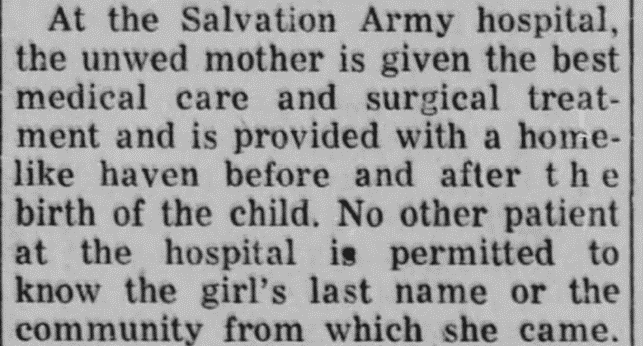Hunting the Past of Unwed Mothers, 1950-1969
KCK Public Library
We think of genealogy as who begat who, but with each generation, in each decade, cultural norms make a shift. As genealogists we must recognize, not judge, these cultural shifts in order to ferret out ancestors.
The a3Genealogy Research team has had five recent cases where we merely are looking for the ancestors, let’s say parents, for 1950-1960 babies. Not adopted children, but DNA revealed Daddy was not Daddy; and Mommy’s lips were sealed. We like to call it a non-parental event, but in all five of these project cases, the mother who had a child out of wedlock, would not assist in identifying the father. We became fascinated in the early struggles of the unwed Mothers and the role biological Dad played in the early years.
Of course, these maternal homes for unwed mothers also cared for those who wished to adopt out their child.
 |
| Published Terra Haute Tribune, 3 Mar 1958 |
The Cultural Shift
 |
| Kansas City Advocate, KCK, 10 Mar 1922, pg 4 |
Between 1951 and 1960, across the nation, the request for paternal financial assistance from unwed mothers increased. For example, toward the end of the decade, abt. 1957, in Cuyahoga, OH cases to establish paternity jumped from 3,524 cases in the previous decade to 9,109 in the 1960’s.
Unwed mothers were no longer being encouraged to turn their
children to adoption agencies.
 |
| Plain Dealer, Cleveland, 31 Dec 1960, pg 4 |
They were encouraged to 1) find an unwed mother advocates; 2) keep their newborn; 3) turn to the court for financial assistance from the biological father.
Although this often was a hard life, as the courts were
flooded with paternal cases, and denials, unwed mother homes were full (DNA was
not popular then), and many would not hire unwed mothers, women organizations
took the lead. They lobbied for more unwed mother homes, and temporary housing in
private homes, often the unwed mother doing domestic work for room and board.
Where to Begin Your Search for Records?
 |
| Salvation Army, 1957 |
In scenarios with cultural turbulence as that seen in 1960, it is not surprising that the truth and records are difficult to uncover.
2. Salvation Army Records. In 1957 alone, 5200 unwed mothers were cared for by the Salvation Army in the USA. In Indiana in 1957, there were six Salvation Army hospitals serving unwed mothers. Names and records were withheld and records were mostly expunged across the nation.
3. DNA. Yes, a full DNA analysis can assist in connecting a child born outside of wedlock to the proper biological family. One of our clients DNA proved her “birth certificate” father, the only one she knew, was not her father “by-blood.” The a3Genealogy DNA team was able to uncover the unknown paternal grandparents. The grandparents had 21 children. Although we ruled out 4 of their eight sons as a possible father (age, deaths, etc), the other four were viable candidates.
Even with the help of child number one of this family unit, we were unable to narrow which of the brothers fathered our client. However, we at least expanded her family unit to twenty aunts and uncles; plus the 21st: her father.
Added Complications of Researching African
American Unwed Mothers
According
to The Brookings Institute, in 1965, just years before Haar began work at
the home, 24% of Black infants were born to single mothers compared to 3.1% of
white infants born to single mothers.
Hospitals were still mostly segregated in cities. The practice of Black Doctors were limited, services were not as widely available for black unwed mothers.
3 Tips to Uncovering Black Unwed Mothers 1950-1969
- Look for transformations
of the historical local black hospital.
In Cuyahoga, it was Mary Talbert Hospital (1925). In Kansas City, Ks., 1923 Dr. A. Porter Davis
Maternity Sanitarium. Learn the local history. This was just one of the refuge homes for
unwed black mothers in the Kansas City area. Read here for more: Unwed
Black mothers in 20th century Kansas City found refuge in home for
women, girls.
- Locate the “colored” organization that supported the black hospital. One example “The Council of Colored Women.” Black archives, State Archives and Local archives, as well as black newspapers may have information on name changes and key players.
- Identify the advocates. Many of these colored hospitals and colored organizations appealed to white organizations sympathetic to the cause, and believers in the purpose of women keeping their children. The Salvation Army partnered with black hospitals across America, to include Booth Hospital to assist.
Be Historically Correct
Kathleen Brandt
a3genealogy.com
Accurate Accessible Answers
a3genealogy@gmail.com







No comments:
Post a Comment